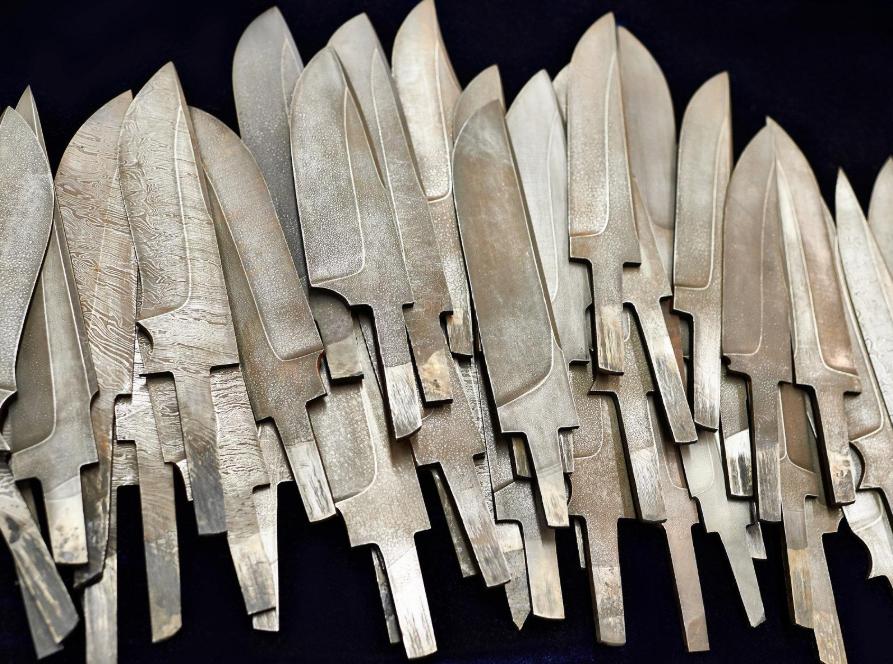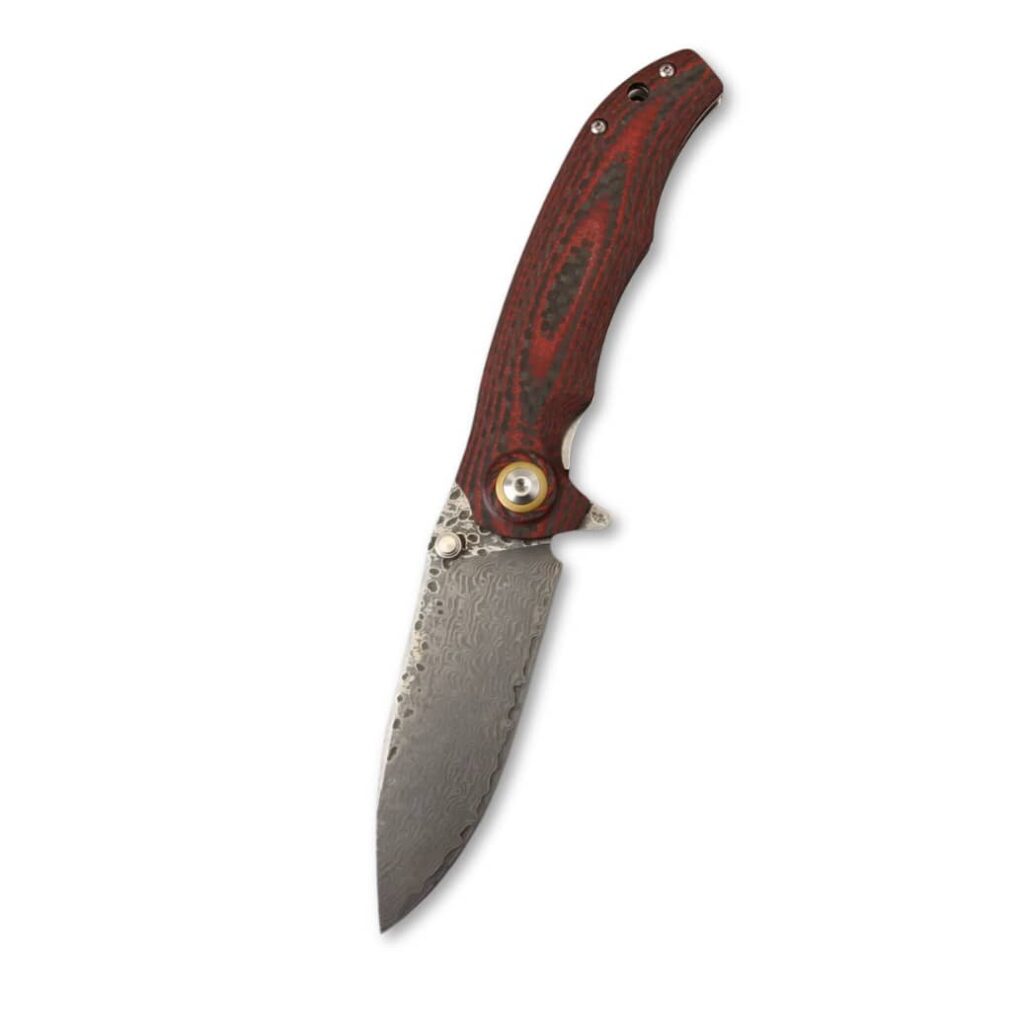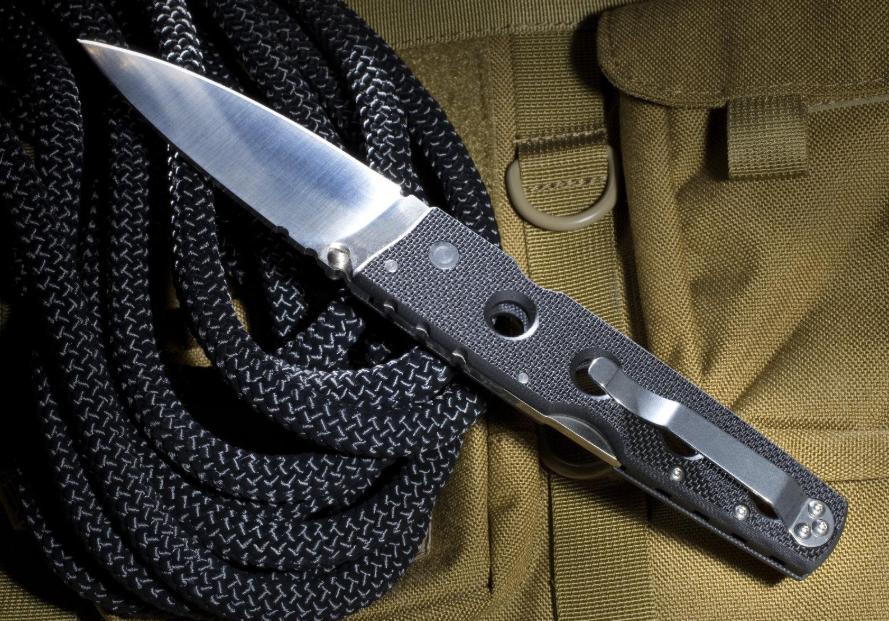440C steel is a long-standing favorite in the knife world.
Whether you’re a knife enthusiast or a seller seeking quality suppliers, understanding 440C is crucial. This versatile steel has stood the test of time, appealing to both beginners and experts.
What makes it special in today’s market of advanced steels?
We’ll explore 440C’s properties, practical applications, and compare it with many steels you know and love. Discover why 440C continues to be a popular choice for knife makers and sellers worldwide.
Overview of 440C Steel

440C steel is a high-carbon stainless steel that became widely popular in the mid-20th century, particularly for its use in knives and other cutting tools. It belongs to the 440 series, which also includes 440A and 440B steels. Among the three, 440C is the most durable and hardest due to its higher carbon content, making it a favorite for knife makers.
Manufacturers often consider 440C an “old reliable” steel due to its balanced performance. It can achieve a Rockwell hardness of 56-59 HRC, providing good edge retention without making the blade too brittle. This steel is often used in a variety of knife blade shapes.
While it may not perform as well as newer “super steels” in extreme conditions, it remains a popular choice for mid-range knives because it offers solid performance at an affordable price.
Knife enthusiasts often describe 440C as a versatile “jack-of-all-trades” steel. It’s not the best in any single property (hardness, toughness, or corrosion resistance), but it provides an excellent balance, making it suitable for a wide range of pocket knife uses.
Start Working with a Professional Now
What Composes 440C Steel?
What sets 440C apart from other steels is its high carbon content, typically ranging from 0.95% to 1.2%, which allows it to achieve good hardness through proper heat treatment. It also contains 16-18% chromium, giving it excellent corrosion resistance compared to non-stainless steels.
Here’s a breakdown of how each element contributes to 440C’s properties:
- Carbon (0.95-1.2%): Carbon is essential for hardness and edge retention. The high carbon content in 440C makes it harder than many other stainless steels.
- Chromium (16-18%): Chromium provides stainless properties by forming a protective oxide layer that prevents rust. It also improves wear resistance.
- Manganese (1.0%): Manganese enhances the steel’s hardenability and wear resistance.
- Silicon (1.0%): Silicon improves strength and toughness.
- Molybdenum (0.75%): Molybdenum increases corrosion resistance and improves the steel’s ability to maintain strength at high temperatures.
- Phosphorus and Sulfur (≤0.04%): These elements are kept low to maintain the steel’s toughness and prevent brittleness.
For sellers or manufacturers, it’s worth noting that the performance of 440C steel is highly dependent on the heat treatment process. Proper heat treatment unlocks its full potential, allowing it to achieve the desired balance of hardness, toughness, and corrosion resistance.
Properties of 440C Steel

Before we dive into the details, let’s look at a quick rating of 440C steel’s key properties on a scale of 1 to 10, with 10 being the best. These ratings are based on the comprehensive scoring system from Knife Steel Nerds:
| Property | Rating (out of 10) |
| Edge Retention | 4.5 |
| Corrosion Resistance | 7.5 |
| Toughness | 3.5 |
| Ease of Sharpening | 7 |
Hardness & Edge Retention
40C steel achieves a Rockwell hardness of 56-59 HRC after heat treatment. This hardness contributes to a moderate level of edge retention. While it has a decent carbon content, it’s not exceptional at holding an edge mainly due to its relatively lower volume of hard carbides compared to some “super steels”. Its hardness does, however, allow for good ease of sharpening, making it a balanced option.
Toughness
While 440C offers decent toughness for most knife applications, it’s not as tough as steels like AUS-8 or CPM steels. It performs best in applications that don’t involve heavy impacts or repeated bending. It performs well for slicing and cutting tasks but may struggle in applications requiring extreme toughness.
Wear Resistance
440C is valued for its durability and ability to resist wear. Its high carbon and chromium content contribute to its superior wear resistance compared to softer steels like 420HC. This makes it a good choice for knives that need to withstand regular use.
Corrosion Resistance
With 16-18% chromium in its composition, 440C offers excellent corrosion resistance, scoring a 7.5 out of 10 in our rating. It performs well in environments exposed to moisture, such as outdoor use or kitchen settings. While not completely rust-proof, it resists rust better than non-stainless steels like D2 or 1095.
Ease of Sharpening
440C steel scores 7 out of 10 for ease of sharpening. Its balanced hardness allows for good edge retention while remaining easy to sharpen. This makes 440C popular among both novice and experienced users. It responds well to various sharpening methods, from traditional stones to modern tools.
In summary, 440C’s properties strike a good balance, making it suitable for a wide range of knife applications.
440C vs. Other Knife Steels

Knife Steel Comparison Table
| Steel | Hardness (HRC) | Edge Retention | Corrosion Resistance | Toughness | Ease of Sharpening |
| 440C | 56-59 | 4.5 | 7.5 | 3.5 | 7 |
| 420HC | 54-58 | 2.5 | 9 | 9 | 8 |
| 440A | 55-56 | 3.5 | 8.5 | 3.5 | 7.5 |
| VG10 | 58-61 | 5 | 7.5 | 4 | 6.5 |
440C vs. 420HC
440C and 420HC are both stainless steels, but they differ significantly in performance. 440C has a much higher carbon content (0.95-1.2%) compared to 420HC (0.45-0.55%), resulting in superior hardness and edge retention. However, 420HC is tougher and easier to sharpen, making it better for budget knives and mass-produced tools, and also has much better corrosion resistance.
440C vs. 440A
Both steels are part of the 440 series, but 440C is harder and offers better edge retention. On the other hand, 440A is more corrosion-resistant and tougher, making it a better choice for knives exposed to harsh environments like saltwater. Both have similar ease of sharpening.
440C vs. VG10
VG10 is a Japanese stainless steel known for its excellent sharpness and edge retention. Compared to 440C, VG10 offers better performance in edge retention and similar corrosion resistance. VG10 is often preferred for high-end Japanese kitchen knives, while 440C is more versatile for outdoor and tactical knives. VG10 is also a little harder to sharpen and has a slightly higher toughness rating.
Start Working with a Professional Now
Knife Steel Comparison Table
| Steel | Hardness (HRC) | Edge Retention | Corrosion Resistance | Toughness | Ease of Sharpening |
| 440C | 56-59 | 4.5 | 7.5 | 3.5 | 7 |
| D2 | 58-61 | 5 | 4.5 | 3.5 | 6 |
| AUS-8(8Cr13MoV) | 56-58 | 3 | 7 | 6 | 8 |
| 9Cr18MoV | 56-59 | 4.5 | 7.5 | 3.5 | 7 |
| 154CM (ATS-34) | 60-61 | 5 | 7 | 3.5 | 5 |
440C vs. D2
D2 is a semi-stainless tool steel with higher toughness than 440C. While 440C offers better corrosion resistance, D2 excels in edge retention and wear resistance. D2 is better suited for heavy-duty tasks, while 440C is a more versatile all-around steel. D2 is also harder to sharpen.
440C vs. AUS-8(8Cr13MoV)
AUS-8 is a Japanese stainless steel known for its toughness and ease of sharpening. It’s chinese version is called 8Cr13MoV. Compared to 440C, AUS-8 is softer, meaning it won’t hold an edge as long but is less likely to chip under heavy use. 440C is a better choice for tasks that require edge retention, while AUS-8 is ideal for knives that need to withstand impact or flexing.
440C vs. 9Cr18MoV
9Cr18MoV is often considered the Chinese equivalent to 440C, with a nearly identical chemical composition. However, the performance of 9Cr18MoV can vary depending on the manufacturer and heat treatment. Generally, both steels offer similar levels of hardness, corrosion resistance, and edge retention, making them interchangeable for most purposes. 9Cr18MoV is commonly used in Chinese-made knives, such as those offered by brands like Kegani. Both have similar ease of sharpening and toughness.
440C vs. 154CM (ATS-34)
154CM (often considered equivalent to ATS-34) is a premium stainless steel known for its good balance of properties. Compared to 440C, 154CM generally offers better edge retention. While 440C has good corrosion resistance, 154CM’s corrosion resistance is slightly lower. 154CM is also a little harder to sharpen than 440C and is often found in higher-end knives.
Best Uses for 440C Steel Knives

440C steel is highly versatile, making it suitable for a wide range of knife applications. Its combination of hardness, corrosion resistance, and edge retention allows it to perform well in various environments:
Outdoor Knives
440C steel is a fantastic choice for outdoor knives due to its high corrosion resistance and ability to hold a sharp edge. These qualities make it suitable for activities like hunting, fishing, and camping, where exposure to moisture, dirt, and other challenging environments is common. However, users should avoid using 440C knives for heavy-duty tasks like batoning wood, as its brittleness may lead to chipping.
Tactical Knives
Tactical knives made from 440C are valued for their durability and sharpness. These knives are often used in demanding situations where reliability is crucial. However, users should be cautious of its brittleness under heavy impacts.
Everyday Carry (EDC) Knives
For EDC knives, 440C offers an excellent balance of performance and affordability. It stays sharp for daily tasks like opening packages, cutting rope, or light food prep. Its stainless properties also make it low-maintenance.
Kitchen Knives
440C is a popular choice in mid-range kitchen knives due to its corrosion resistance and edge retention. It can handle regular food prep without rusting, though premium kitchen steels like VG10 may offer better sharpness for professional chefs.
Custom Knives
Many custom knife makers favor 440C because of its ease of machining and polishing. It’s a reliable steel that can be heat-treated to meet specific hardness and performance requirements.
Industrial and Medical Tools
Beyond knives, 440C is used in industrial cutting tools, surgical instruments, and bearings due to its strength and resistance to wear and corrosion.
Kegani: Your Source for Quality Chinese Knives

At Kegani, we specialize in producing high-quality knives made from 440C steel and other premium materials. Our mission is to deliver reliable, durable, and affordable knives to meet the needs of both individual users and retailers. With years of expertise in knife manufacturing, we pride ourselves on offering a wide variety of products that leverage the strengths of 440C steel.
Why Choose Kegani?
- Superior Craftsmanship: At Kegani, we ensure that every knife is crafted with precision and care. Our knives undergo rigorous quality control checks to ensure they meet the highest standards.
- Expert Heat Treatment: Proper heat treatment is critical to unlocking the full potential of 440C steel. We use advanced techniques to maximize hardness, edge retention, and durability.
- Customization Options: Whether you need knives for outdoor use, tactical gear, or kitchen applications, we offer customization options to suit your specific requirements. From blade shapes to handle materials, you can create the perfect tool for your needs.
- Bulk Purchase and Shipping Solutions: For retailers and distributors, we provide cost-effective bulk purchasing options and reliable international shipping. Our logistics team ensures timely delivery, no matter where you are in the world.
- Affordable Pricing: By sourcing high-quality materials and manufacturing efficiently, we keep costs low without compromising on quality.
Feel free to contact a professional if you have more questions regarding knife manufacturing and design.

